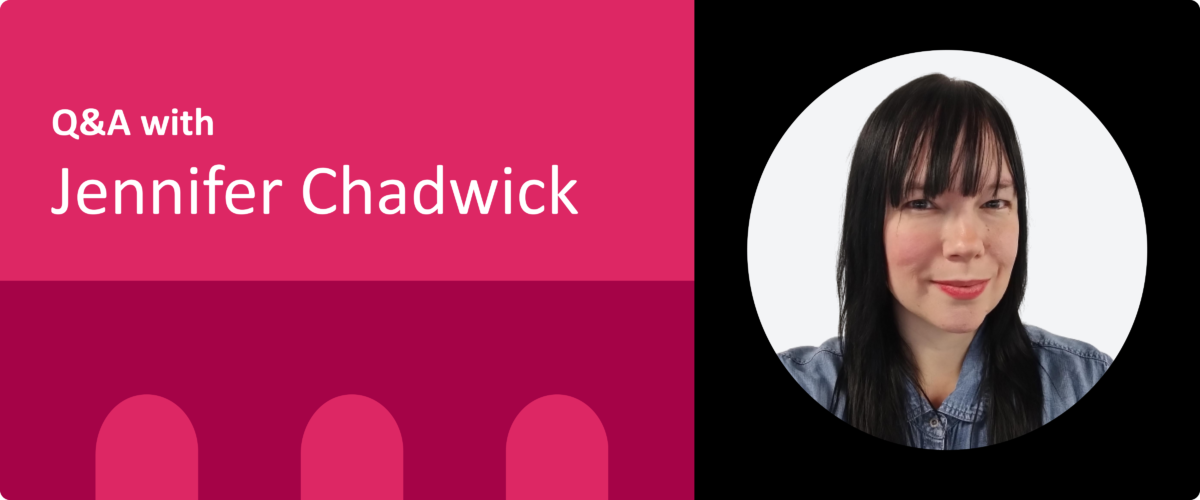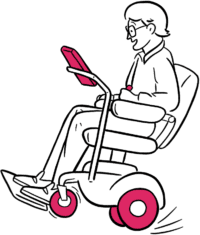
Jennifer Chadwick on the future of digital accessibility
Moving from compliance and automated testing to creating usable and delightful experiences
Jennifer Chadwick has held leading accessibility strategy positions at CIBC, Softchoice and most recently, Siteimprove. She is an active board member and advisor to the ICT Accessibility Testing Symposium and MagnusMode, a mobile app for supporting independent living for people with autism and neurodiversity.
As a contributor, Jennifer worked on the creation of the digital accessibility standard, WCAG (Web Content Accessibility Guidelines). She further spoke at the United Nations about how teams can implement digital accessibility policies in 2022.
In late 2022, Jennifer joined the Fable innovation team as a Senior Accessibility Specialist.
We sat down with Jennifer to learn more about her journey, what digital teams need to know for accessibility in 2023, and what made her make the switch from a compliance-focused automated solution to Fable, an accessibility platform that focuses on both accessibility and usability.
Before joining the team, what was your experience with Fable?
I’ve known about Fable since the company started 5 years ago. I’ve always admired Fable’s founders, Alwar Pillai and Abid Virani, and their goal of putting people first within accessibility strategies. And teaching companies to create digital products based on usability rather than legal compliance with standards.
Throughout my career, I’ve always been drawn to collecting feedback directly from people with disabilities, which Fable does at scale. This kind of user research provides insights and benchmarks for how designers, developers, QA and project managers alike are progressing in their continued efforts to build and improve digital services and solutions.
I knew Fable’s innovation team as a thought leader in the accessibility space as the team elevates the voices of people with disabilities and challenges organizations to think differently about accessibility problems.
How have you seen accessibility testing with people with disabilities benefit digital teams?
User experience is something that companies strive to make delightful and meaningful, something people want to repeat.
Consumers become loyal to a brand or product they can use easily. This is especially true for people with disabilities.
However, products or apps that aim to make our lives easier are often completely unusable for not only people with disabilities but also aging populations and anyone experiencing a temporary disability (such as an injury). If someone cannot easily complete a critical task to use your service, that’s neither convenient nor delightful.
When you complete accessibility testing with assistive technology users with disabilities, you create innovative experiences that are not only usable but also intuitive, simple and delightful for everyone.
Companies wanting to capture the “voice of the customer” in their user research have Fable to amplify, provide access and engagement with voices of customers from a large community of assistive technology users with disabilities.
Fable reminds the business world that people with disabilities are simply people. All of us have the right to live, work, shop, learn and communicate online (the list goes on).
I hear people frequently talk about what is the next “tech innovation”. I think building products that are usable for everyone is the next innovation we should strive for. It’s more than a tech innovation– it’s social innovation.
In your experience, how does usability testing differ from automated testing?
Automated testing platforms (and browser plugin tools) that scan websites and mobile apps for ongoing Web Content Accessibility Guidelines (WCAG) conformance are an effective way to monitor your team’s accessibility efforts, especially over a large website with thousands of pages (and multiple contributors to the content and design). However, on its own automated testing does not ensure your products are entirely accessible or usable.
Usability testing is a stronger source of truth. It asks, “is my app or website usable for everyone?” and even moves to is this experience easy and enjoyable?”
Usability testing further allows you to prioritize your accessibility efforts as you can determine what fixes will have the most impact on the usability of your product.
Digital teams are connected to a community of people with disabilities who complete usability testing for a digital experience from beginning to end with Fable Engage. This is often a perspective digital teams have not seen before.
This kind of testing captures exactly how your product might be at best, difficult to use — or at worse, completely inaccessible. After observing this, digital teams get excited – they want to fix problems. I’ve seen this firsthand.
Should digital teams use automated accessibility tools? If so, how?
Yes, but not on their own. Use automated tools to tackle the low hanging fruit (like alt text or drop-down menus) and to make sure you’re in conformance with accessibility standards.
Then, complete usability testing to ensure the actual experience is usable. Automated solutions cannot ensure this on their own.
A website can be technically accessible, but frustrating, confusing and ultimately unusable. And, if your task completion rates are low or zero, it won’t be accessed at all.
You’ve worked on accessibility standards and automated solutions in the past, why focus on usability with Fable now?
Compliance with the WCAG is the bare minimum that can be met through a company’s efforts. It’s usually done to meet legal compliance, on paper – much like a condo building that’s “up to code”.
However, this doesn’t guarantee a product will be usable and meaningful. People buy a condo because it’s been designed with a human in mind – comfortable, easy to use and livable long-term.
In the same way, a website can technically meet WCAG success criteria (e.g., images have alt text, or a button is labelled) but what if the alt description is inaccurate? Then it’s confusing. What if a button is at the bottom of the page and difficult for users to find? Then it’s frustrating and may lead to a task not being completed.
Companies often ask:
“What’s the bare minimum we need to do to meet compliance?”
When they should be asking:
“How usable is this for someone with a screen reader?”
With usability, you are creating product experiences that are not only compliant but will spark loyalty from the world’s largest unaddressed market segment.
What made you want to work at Fable?
I’m excited that Fable also offers practical training through Fable Upskill. It is exactly the kind of customized and role-based courses, code examples and practical accessibility guidance that I wish I always had available to me.
Fable’s testing community completes video-based usability and accessibility demonstrations that are delivered hand-in-hand with essential learning and unique improvement opportunities for digital teams. I’ve never seen anything like that. I’m thrilled to be a part of it.
What is one important thing digital teams need to know for 2023?
There are two popular models of disability: medical and social.
The medical model of disability: Identifies the individual as disabled, lacking and an outlier.
There is also the social model: Identifies society itself as a disabling force in the way we build our physical environment and digital products.
If we consider the social model of disabilities, an inaccessible digital product is disabling the person, not the other way around. This is what Fable drives companies to adopt.
One of the largest barriers to digital teams making efforts for accessibility is they only see disability from the medical model. If you move beyond just being fearful of non-compliance with standards to a people-centered approach, you’ll create the kind of product experiences the greatest number of customers will keep coming back for. This is why Fable drives companies to adopt the social model.
Personally, what are you most excited to tackle in 2023?
I’m most excited to support Fable’s unique model of approaching customer experience from the point of the usability of products and services, and not through standards that can be difficult to follow and meet at times.
Other companies offer automated WCAG testing and manual auditing services. These certainly help to identify ‘showstopping’ barriers to accessibility within code and content. But they only show you where you are failing the standard and do not help you to implement a practice of inclusive product development as Fable does.
Digital accessibility and usability take time to evolve: your team’s new habits take time to form, skills to develop, processes to change. I’m excited to be part of guiding digital teams through insights from a community of assistive technology users.
I’m passionate about understanding the needs of people with disabilities who use assistive technology. And barriers caused by inaccessible design. This is my driver for the work and social innovation we do at Fable. Let’s get started and do it together.

